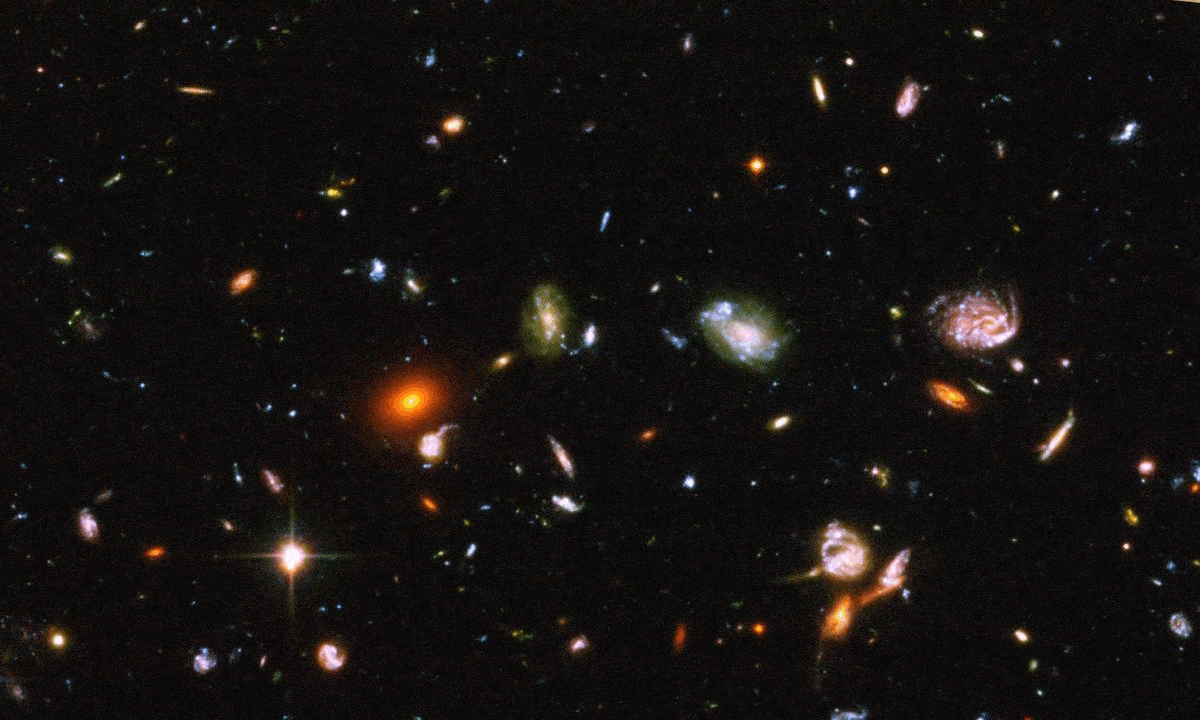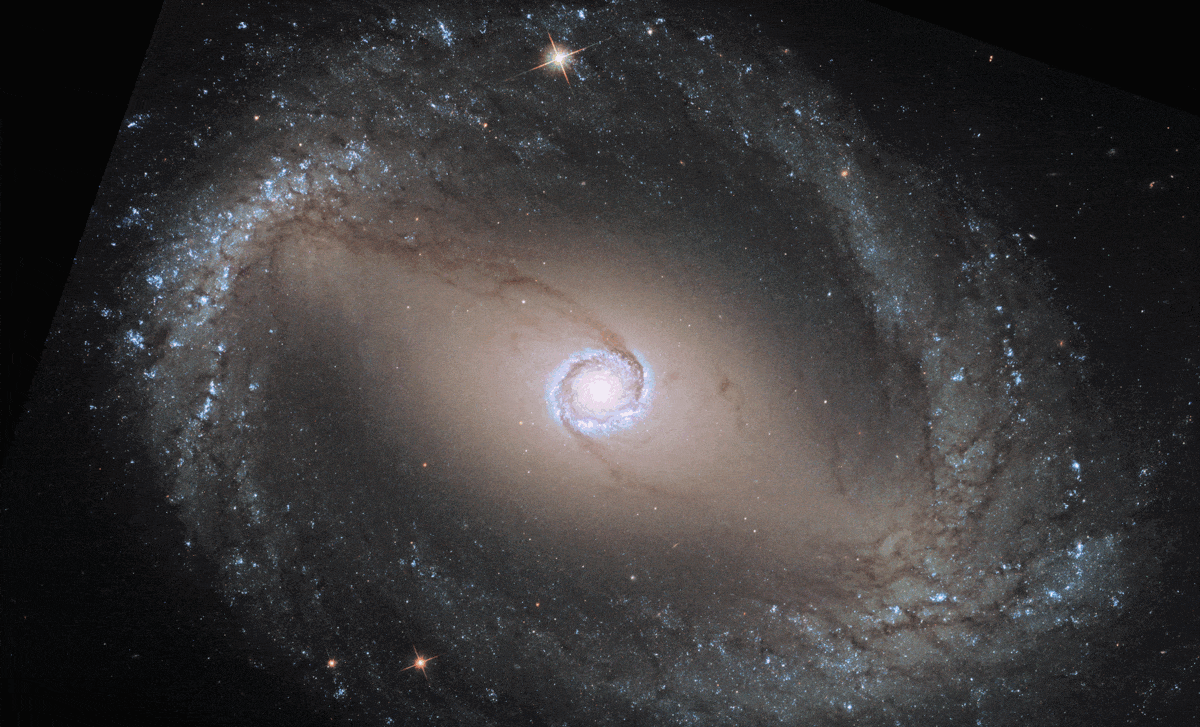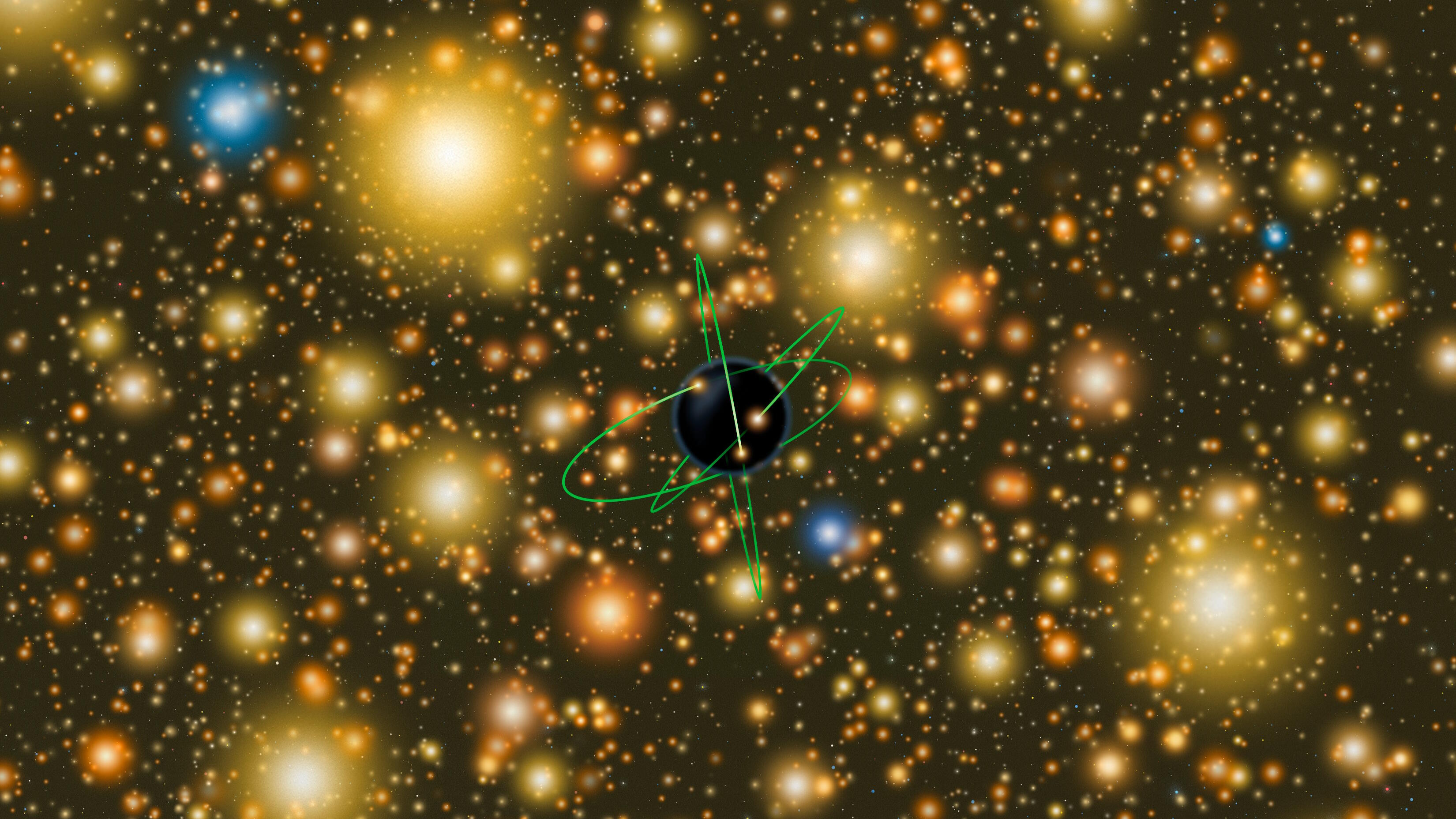New simulations show how supermassive black holes form
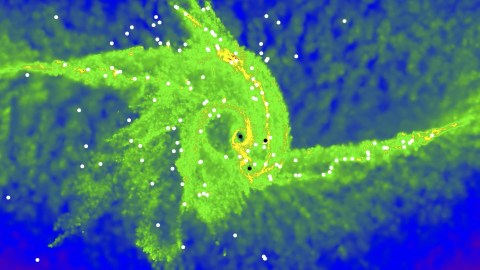
Image source: Sunmyon Chon/National Institutes Of Natural Sciences, Japan
- A new theory takes the direct-collapse theory explaining the creation of supermassive black holes around which galaxies turn ones step further.
- The advance is made possible by a super-powerful computer, ATERUI II.
- The new theory is the first that accounts for the likely assortment of heavy elements in early-universe gas clouds.
It seems that pretty much every galaxy we see is spinning around a supermassive black hole. When we say “supermassive,” we mean BIG: Each is about 100,000 to tens of billions times the mass of our Sun. Serving as the loci around which our galaxies twirl, they’re clearly important to maintaining the universal structures we see. It would be nice to know how they form. We have a pretty good idea how normally-huge-but-not-massive black holes form, but as for the supermassive larger versions, not so much. It’s a supermassive missing piece of the universe puzzle.
Now, in research published in Monthly Notices of the Astronomical Society, astrophysicists at Tohoku University in Japan reveal that they may have solved the riddle, supported by new computer simulations that show how supermassive black holes come to be.
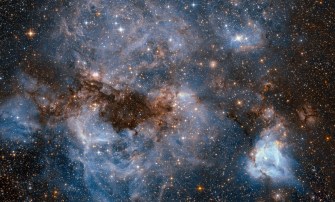
Glowing gas and dark dust within the Large Magellanic CloudImage source: ESA/Hubble and NASA
The favored theory about the birth of supermassive black holes up to now has been the “direct-collapse” theory. The theory proposes a solution to a cosmic riddle: Supermassive black holes seem to have been born a mere 690 million years after the Big Bang, not nearly long enough for the standard normal black hole genesis scenario to have played out, and on such a large scale. There are two versions of the direct-collapse theory.
One version proposes that if enough gas comes together in a supermassive gravitationally bound cloud, it can eventually collapse into a black hole, which, thanks the cosmic background-radiation-free nature of the very early universe, could then quickly pull in enough matter to go supermassive in a relatively short period of time.
According to astrophysicist Shantanu Basu of Western University in London, Ontario, this would only have been possible in the first 800 million years or so of the universe. “The black holes are formed over a duration of only about 150 million years and grow rapidly during this time,” Basu told Live Science in the summer of 2019. “The ones that form in the early part of the 150-million-year time window can increase their mass by a factor of 10 thousand.” Basu was lead author of research published last summer in Astrophysical Journal Letters that presented computer models showing this version of direct-collapse is possible.
Another version of the theory suggests that the giant gas cloud collapses into a supermassive star first, which then collapses into a black hole, which then — presumably again thanks to the state of the early universe — sucks up enough matter to go supermassive quickly.
There’s a problem with either direct-collapse theory, however, beyond its relatively narrow time window. Previous models show it working only with pristine gas clouds comprised of hydrogen and helium. Other, heavier elements — carbon and oxygen, for example — break the models, causing the giant gas cloud to break up into smaller gas clouds that eventually form separate stars, end of story. No supermassive black hole, and not even a supermassive star for the second flavor of the direct-collapse theory.

ATERUI IIImage source: NAOJ
Japan’s National Astronomical Observatory has a supercomputer named “ATERUI II” that was commissioned in 2018. The Tohoku University research team, led by postdoctoral fellow Sunmyon Chon, used ATERUI II to run high-resolution, 3D, long-term simulations to verify a new version of the direct-collapse idea that makes sense even with gas clouds containing heavy elements.
Chon and his team propose that, yes, supermassive gas clouds with heavy elements do break up into smaller gas clouds that wind up forming smaller stars. However, they assert that’s not the end of the story.
The scientists say that post-explosion, there remains a tremendous inward pull toward the center of the ex-cloud that drags in all those smaller stars, eventually causing them to grow into a single supermassive star, 10,000 times larger than the Sun. This is a star big enough to produce the supermassive black holes we see when it finally collapses in on itself.
“This is the first time that we have shown the formation of such a large black hole precursor in clouds enriched in heavy-elements,” says Chon, adding, “We believe that the giant star thus formed will continue to grow and evolve into a giant black hole.”
Modeling the behavior of an expanded number of elements within the cloud while faithfully carrying forward those models through the violent breakup of the cloud and its aftermath requires such high computational overhead that only a computer as advanced as ATERUI II could pull off.
Being able to develop a theory that takes into account, for the first time, the likely complexity of early-universe gas clouds makes the Tohoku University idea the most complete, plausible explanation of the universe’s mysterious supermassive black holes. Kazuyuki Omukai, also of Tohoku University says, “Our new model is able to explain the origin of more black holes than the previous studies, and this result leads to a unified understanding of the origin of supermassive black holes.”
